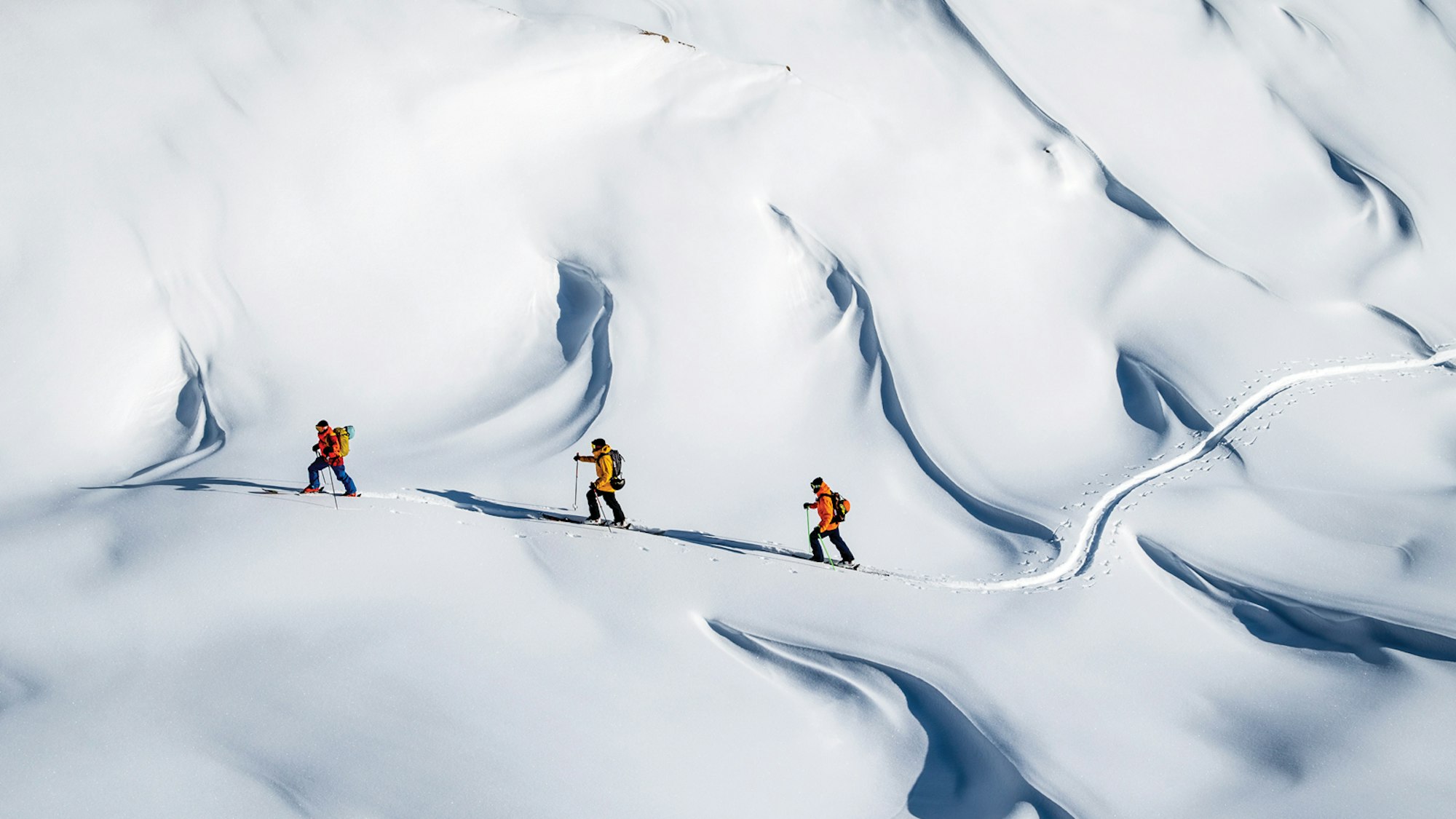

How Marker is using its performance heritage to excel in the backcountry space
WORDS • TESS STROKES | PHOTOS • PALLY LEARMOND
With a name like Marker, and its dominance in the binding world, one might wonder if the company could simply rest on its laurels. After all, the company has been at the forefront of ski binding technology for the last 50 years. Since developing the first commercially successful releasable ski bindings in the 1950s, the Duplex and Simplex Toe, Marker has earned one of the most respected reputations in the business and sells more than one million sets of bindings per year. But rather than coast through the last decade on its alpine name, Marker has launched four new backcountry touring bindings since 2007, when the Marker Duke entered the scene and solidified Marker as a contender in the backcountry space. Now with this year’s Marker Alpinist, a 245-gram fully featured tech binding, the company can compete with some of the lightest touring bindings on the market.
While the Alpinist 9 (4-9 DIN) and 12 (6-12 DIN) look and weigh similar to a minimalist tech bind-ing, they offer more features, and some would argue better downhill performance, than any binding in its weight class.
“The Alpinist is really an engineering achievement,” says 15-year Marker athlete Stian Hagen. “The real gem is that the Marker engineers managed to make the housing in the front binding from a carbon infused material that both saves weight, increases durability and costs less in production—a real win for everyone.”
Marker leveraged its experience in composite materials engineering to develop a lightweight bind-ing that includes three climbing aid positions, a 38 mm-wide mounting plate (upping power transmission), adjustable lateral release (up to 15 mm of modification), step-in support, brake and ski crampon options, anti-ice pads and a competitive price point (under $500). It’s a product that firmly plants Marker in the backcountry, a movement a dozen years in the making.
In 2007, the company worked closely with athletes to develop the first freeski-specific bindings, naming the group the Royal Family. That year introduced the Jester (park/big mountain specific that centered swing-weight) and the Duke. The latter was truly something new in the ski world: a touring binding that offered alpine performance for the descent. The level that human powered skiers could charge downhill increased exponentially and the binding opened up an entire new audience to backcountry skiing. In 2008, Marker introduced the Baron (more affordable and lighter than the Duke). Two years later, Marker launched three new bindings: the Tour 10, Tour 12 and the Squire. The Tour bindings were the first Marker bindings that focused as much on uphill performance as down. In 2013, Marker launched the Lord, a touring and alpine binding with interchangeable toe pieces—a hybrid between the Jester and the Duke. But it was the Kingpin tech binding release in 2014, the go-to binding for athletes like Angel Collinson, Nadine Wallner, Austin Ross and Colter Hinchliffe, that changed the game for Marker and the tech binding space.
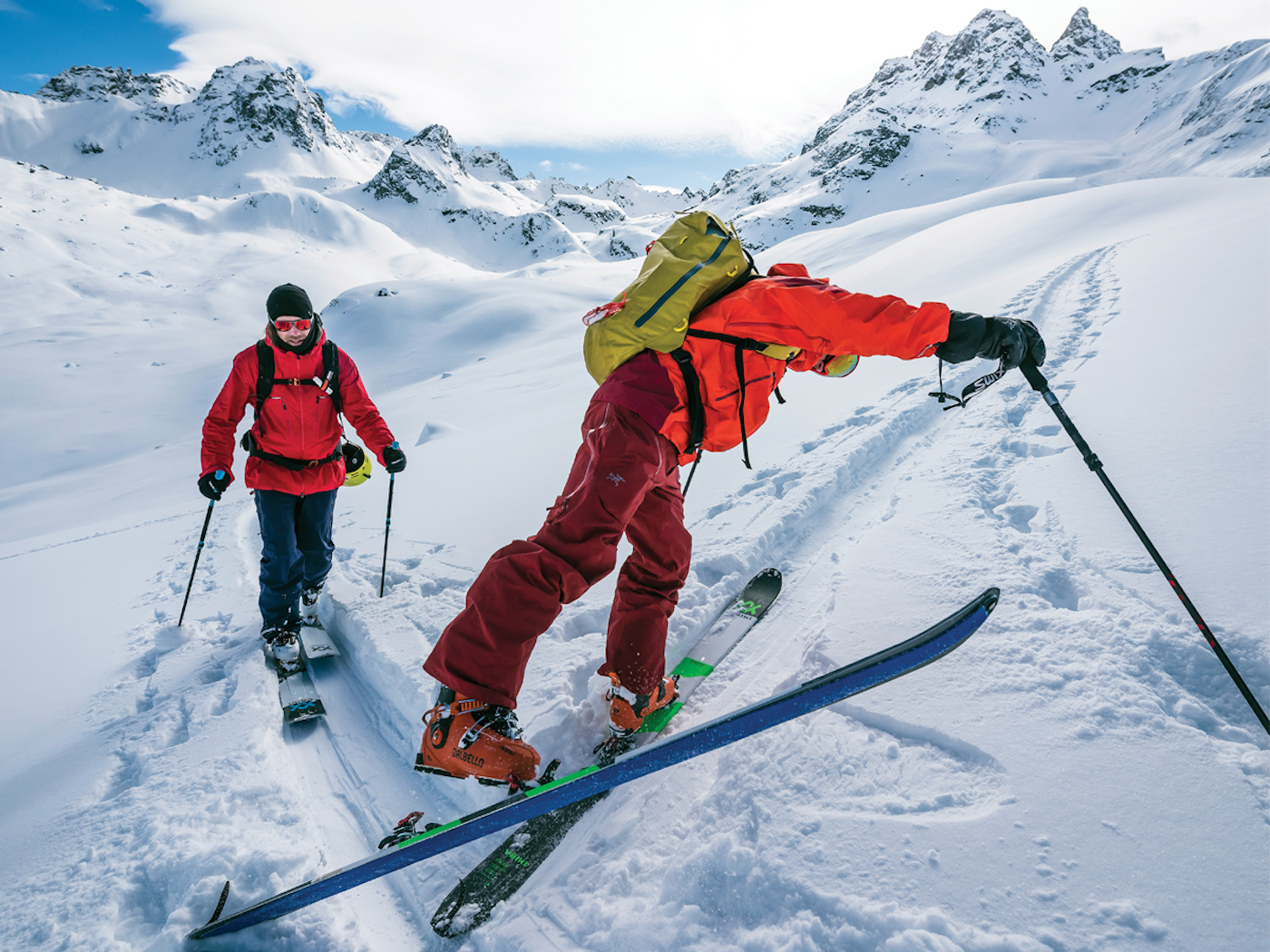
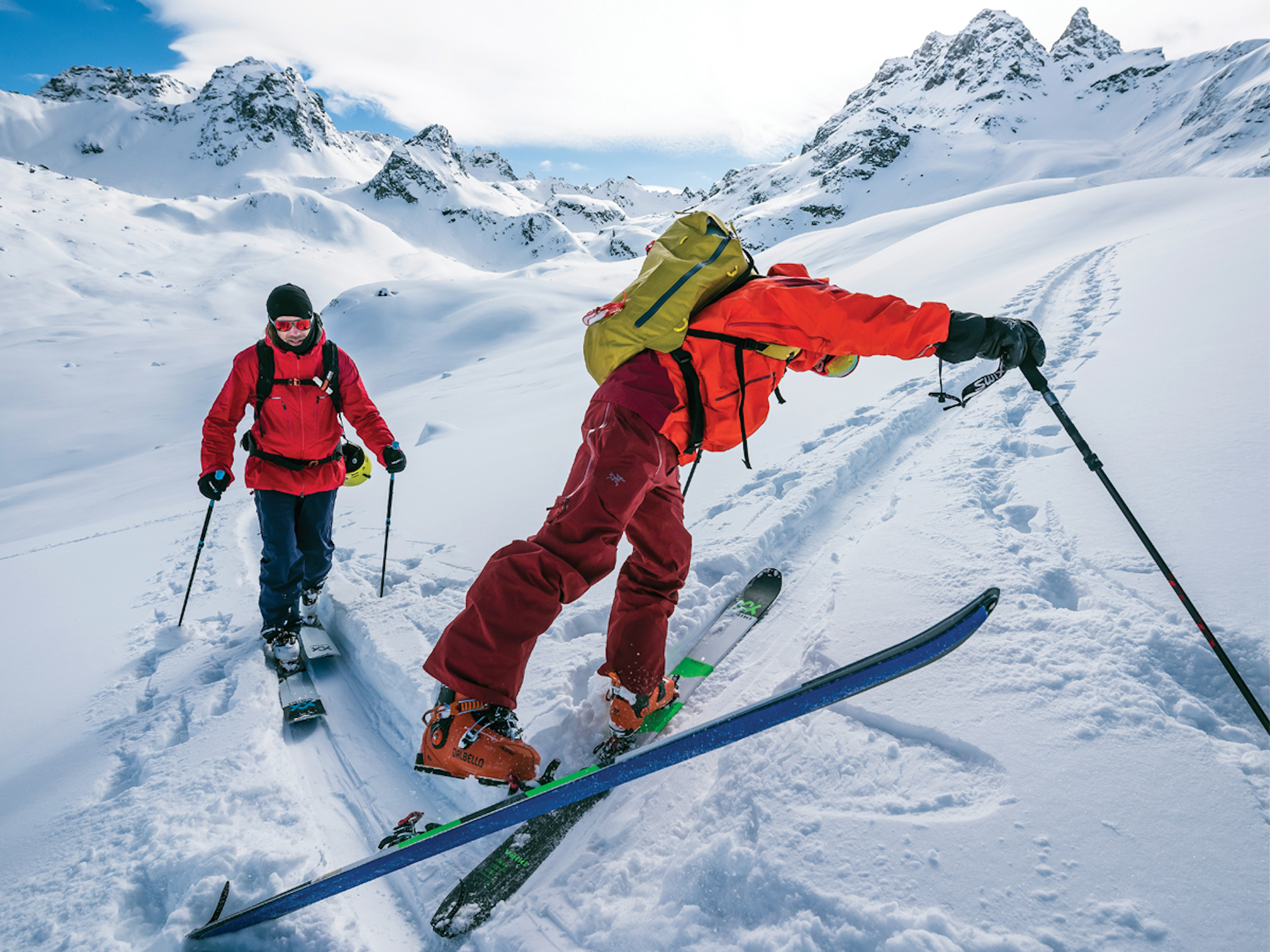
Skiers: Stian Hagen & Lucas Swieykowski
Featured Gear:
Marker Alpinist 12 — $449
The new Alpinist 12 is jam-packed with the recent technological innovations pervading the tech binding space, but with a remarkably low weight of 335 grams per binding. The Alpinist’s toe piece is similar to that of the Marker Kingpin, but with two springs instead of six. The pivot point is roughly three millimeters higher than comparable bindings, allowing for top-notch retention in ski mode. For the Alpinist, however, the biggest product feature is the heel. It has adjustable vertical and lateral release, and actively compensates for length changes in the ski. When the ski flexes in and out of a turn, a track allows the heel to travel a maximum of 4 millimeters to bolster release consistency and provide better power transmission into the ski. The Alpinist 12 is a lightweight touring binding that’s a dream on the ascent and as smooth as the other side of the pillow on the descent.
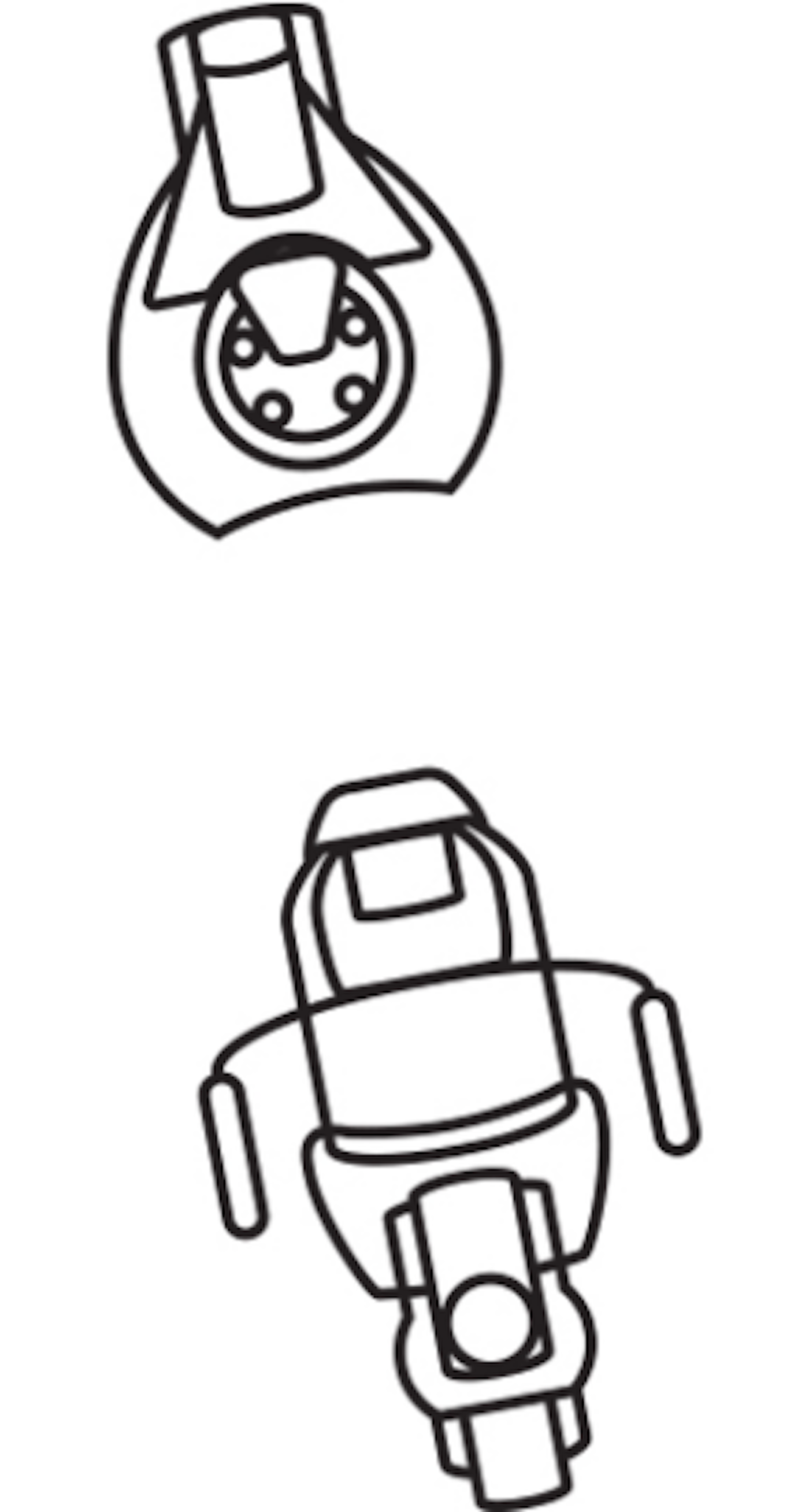
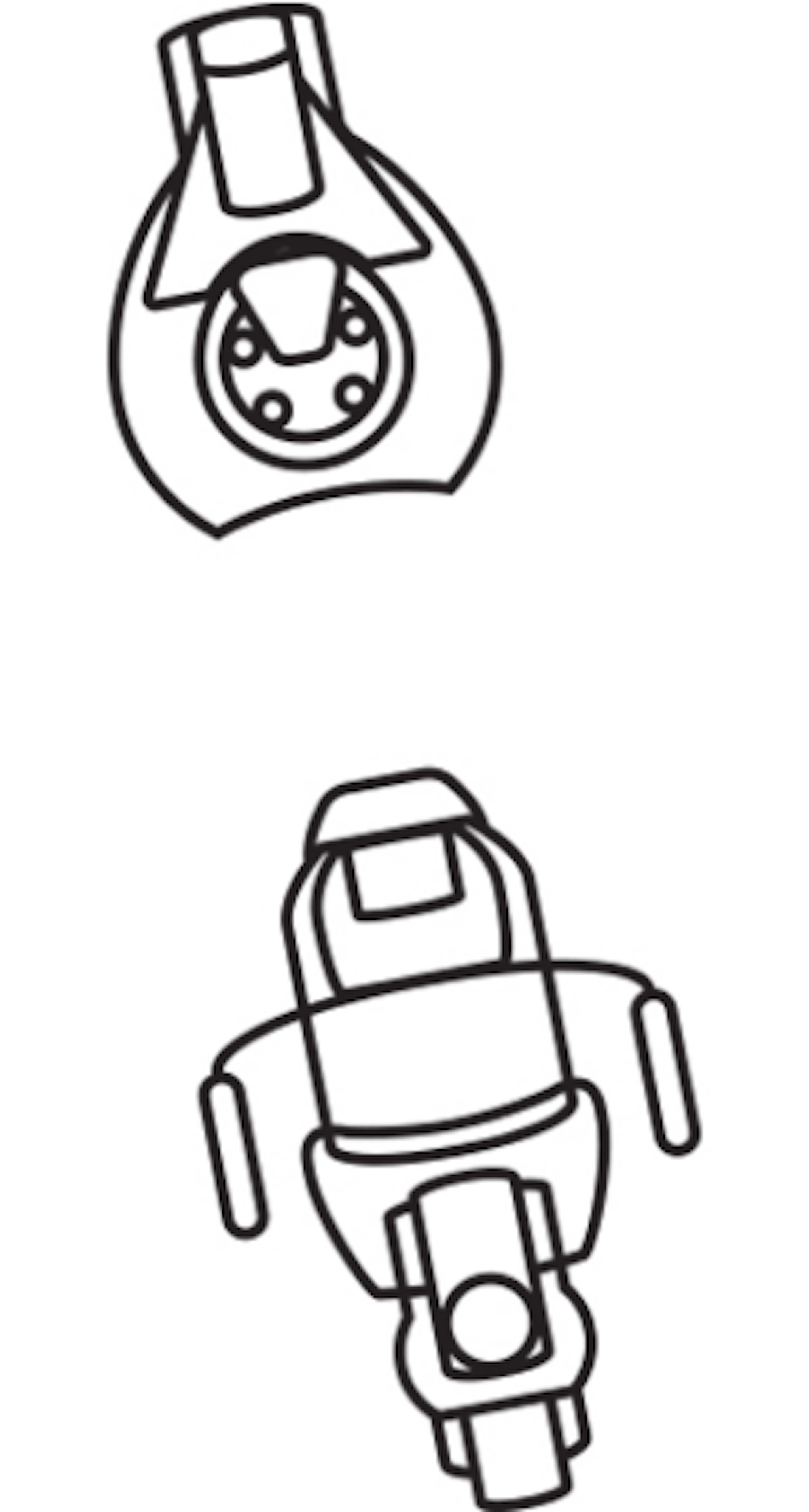
2018 Freeride World Tour runner-up, slopestyle Olympian, Matchstick Productions film star and burgeoning ski mountaineer Markus Eder skis on the Kingpin about 70 percent of his season. The binding helped the once tech-binding skeptic fall in love with touring. The 27-year-old from South Tyrol, Italy was on the Kingpin when he attempted a first ski descent of the most difficult mountain in Georgia’s Caucasus region in 2017. “I think I’ve been really testing it to the limit these years,” says Eder. “On big lines, big cliffs and even landing switch on backcountry kickers, the Kingpin holds up.” Eder even landed a triple flatspin 10 on the tech binding in Alagna, Italy in August 2018. “I’m stoked we have the opportunity to give our input and are listened to,” says Eder. “I love the drive of development and how Marker keeps up with the evolution of our sport.”
After the success of the Kingpin, Marker spent two years developing the Alpinist. Marker’s reputation for performance and security starts at its Bavarian headquarters in Penzberg, Germany, where the company tests its bindings for strength, safety and how the binding influences a ski’s performance. Marker says that last component of testing helps the company maintain its lead in the market. One machine bends the ski over and over until it or the binding breaks while another one vibrates the ski like crazy to test for dampness. Combined with various other equipment, the testing center gives off a space station vibe. According to Marker, 99 percent of the new Alpinist binding is made up of new parts, 80 in total, all developed specifically to offer a lightweight, full-featured tech binding. This took over two years, 4,000 hours of research and development, an investment of around $1.4 million and 820,000 vertical feet of testing.
Hagen skied on many different prototypes to fine tune the functionality of the binding and its durability. “You always test a binding in the lab to see how it holds up, but field testing is crucial, as you can never 100 percent replicate real use in a lab.”
Polar explorer and Ice Axe Expeditions owner and guide Doug Stoup, a decade-long Marker athlete, has skied on the Alpinist all over the world since February 2017, testing the binding in every kind of condition in places like Kashmir, India, Svalbard, Norway and Antarctica. A long tour for Stoup might include climbing through isothermic snow, crossing 50,000-year-old glacial ice with ski crampons, walking through boot-deep powder and then skinning through 15 different types of névé atop glacial debris. And then skiing back down.
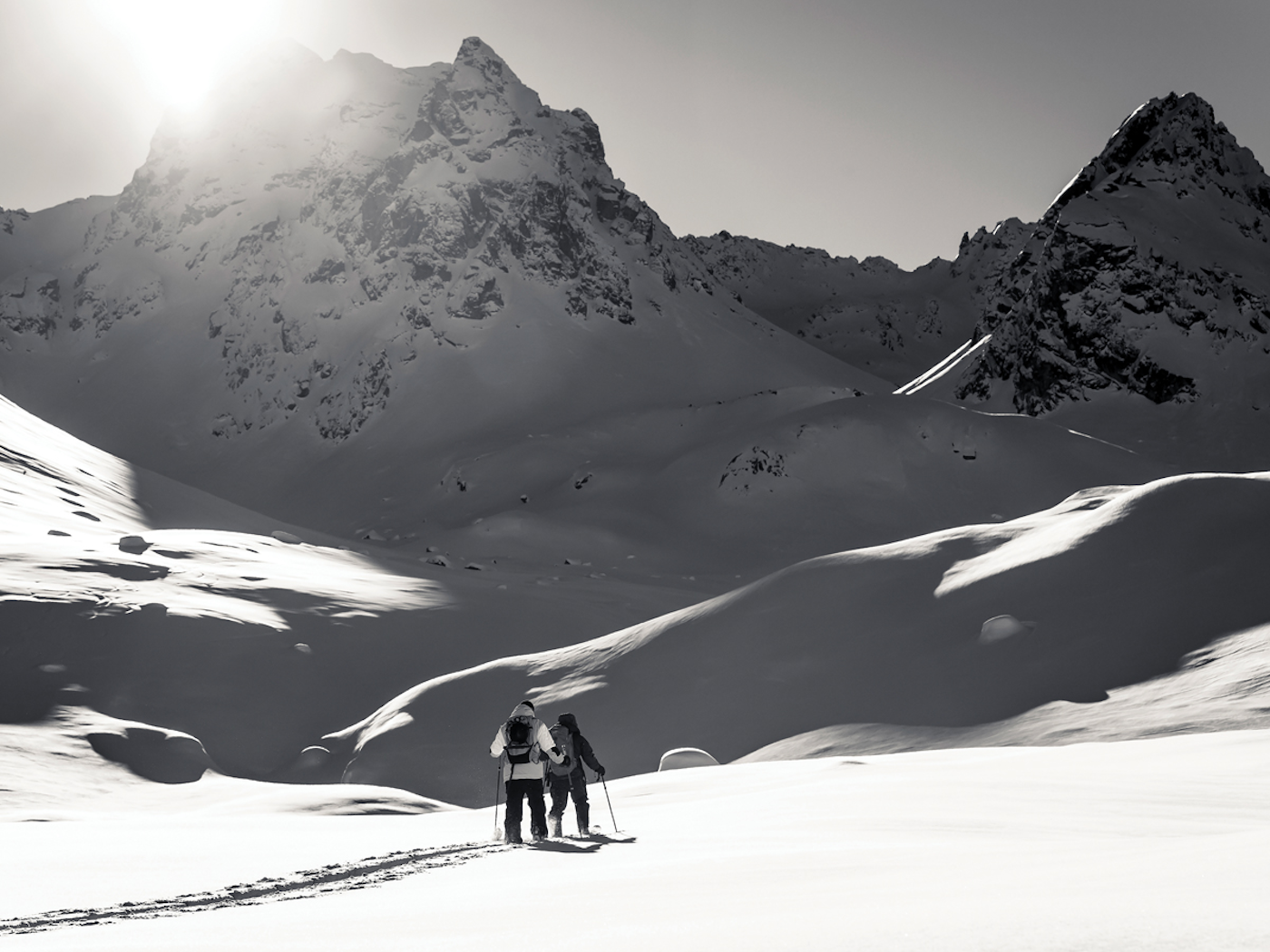
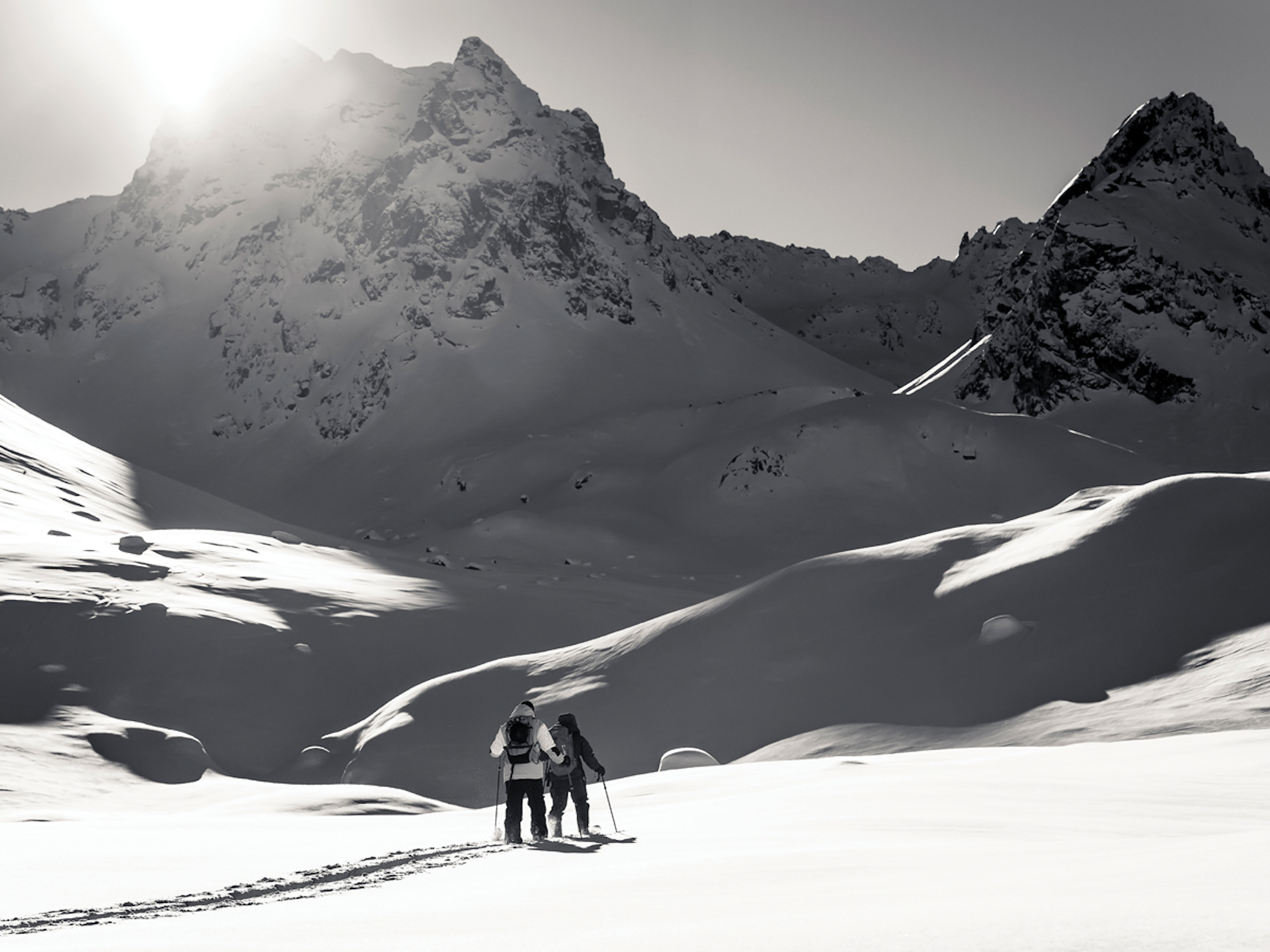
Skiers: Paddy Graham & Stian Hagen
In terms of downhill performance, Stoup and testers say the Alpinist transfers less feedback on hardpack and ice and softens the ride through chopped up snow, even at high speeds. Stoup weighs just over 200 pounds and has walked out of many tech bindings in the past. “I’m a big guy—I want something torsionally rigid,” says Stoup. “When the ski flexes, the Alpinist has 4 mm of travel. I feel the smoothness and consistency and a better connection between ski and boot. I’d pop out of other tech bindings that didn’t have that maneuverability with travel—I didn’t trust them on the descent. I get into no-fall zones, and I want a binding I trust and feel confident [on]. With the Alpinist, I don’t even pop the toe up for the descent.”
“Our goal was to offer the best ratio of weight to performance and good power transmission,” says Geoff Curtis, VP of marketing for Marker/Völkl USA. “The boot sits flush against the [binding’s] heel housing, which is a big part of getting more performance out of such a lightweight binding.”
One of the most common praises of the Alpinist is its smooth feel, and the binding achieves this through dynamic length compensation. The Alpinist heel piece moves on a track, up to 4 mm, as the ski is flexed, to compensate for the subsequent length change. The feature ensures proper release, but it also connects boot with ski and creates the smoothness many early Alpinist skiers have raved about. The toe piece on the Alpinist looks similar to the Marker Kingpin, but with only two springs instead of six. Stoup and testers say it’s solid, and that might be from the higher pivot point of the Alpinist toe piece, which measures about 3 mm higher than the toe piece of the comparable Dynafit TLT Speed. The Alpinist’s U-spring controls the vertical release and consumers can buy three different levels of strength (soft, medium or hard).
Along with the launch of the Alpinist, Marker updated its classic Duke binding to the Duke Pro, offering a 8-18 DIN range. That’s a new heavy weight freeride touring binding and one of the lightest fully featured tech bindings on the market in the same season. Talk about your full-spectrum collection.
“The Alpinist completes Marker’s range of bindings in the touring segment,” says Hagen, who uses the Kingpin for his everyday binding in his home of Chamonix. “We now have an offering for everyone who wants to venture into the backcountry. Ski touring is such a fantastic sport and opens up so many opportunities for adventure and fitness, and having a collection this wide-ranging allows more people to enjoy this growing segment of skiing.”

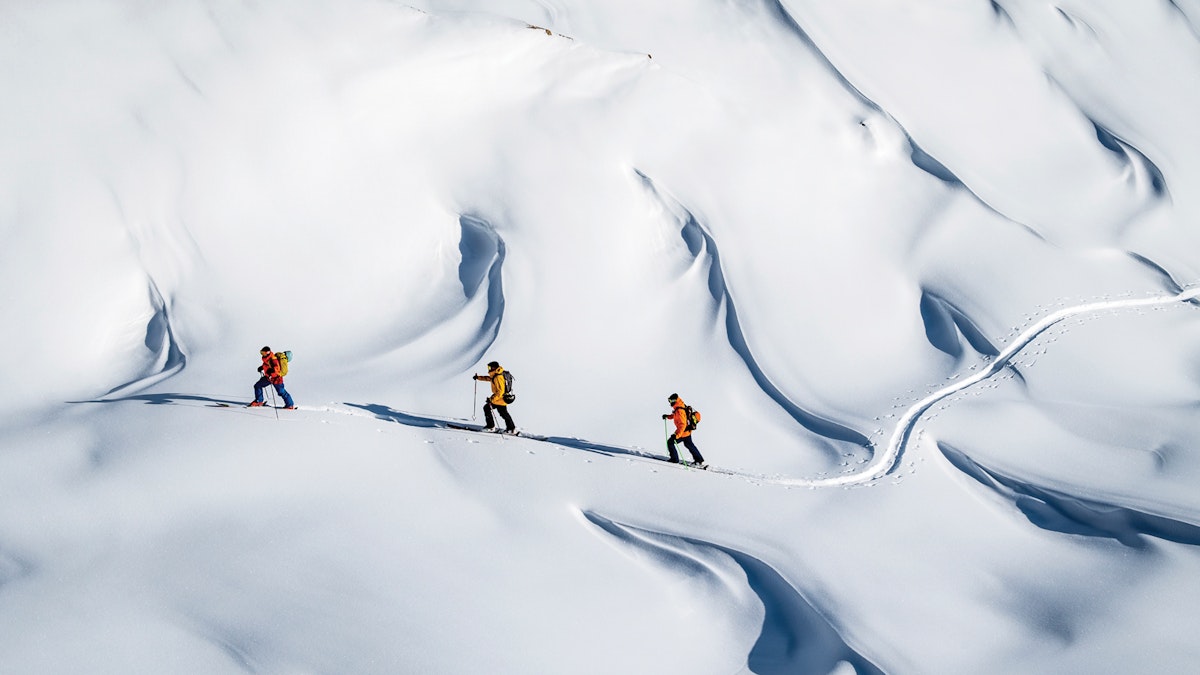

![[GIVEAWAY] Win a Head-to-Toe Ski Setup from IFSA](https://www.datocms-assets.com/163516/1765920344-ifsa.jpg?w=200&h=200&fit=crop)


![[GIVEAWAY] Win a Legendary Ski Trip with Icelantic's Road to the Rocks](https://www.datocms-assets.com/163516/1765233064-r2r26_freeskier_leaderboard1.jpg?auto=format&w=400&h=300&fit=crop&crop=faces,entropy)




![[GIVEAWAY] Win a Head-to-Toe Ski Setup from IFSA](https://www.datocms-assets.com/163516/1765920344-ifsa.jpg?auto=format&w=400&h=300&fit=crop&crop=faces,entropy)


